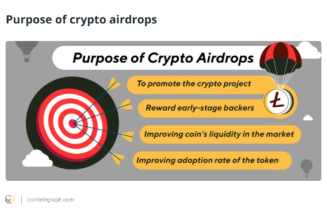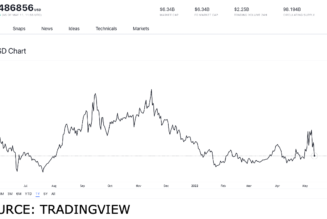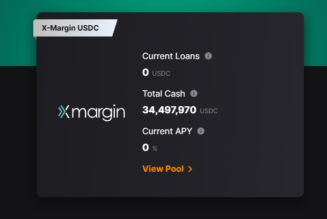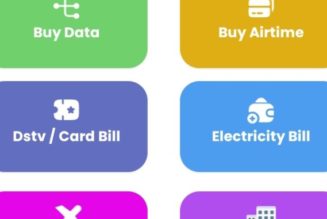App-specific blockchains, or appchains, are specifically designed to support the creation and deployment of decentralized applications (DApps). In an appchain, each app runs on its separate blockchain, linked to the main chain. This allows for greater scalability and flexibility, as each app can be customized and optimized for its specific use case.
Appchains are also an alternative solution for scalability to modular blockchains or layer-2 protocols. Appchains present similar characteristics to modular blockchains, as it is a type of blockchain architecture that separates the data, transaction processing and consensus processing elements into distinct modules that can be combined in various ways. These can be thought of as “pluggable modules” that can be swapped out or combined depending on the use case.
This separation of functions is why there’s greater flexibility and adaptability to appchains compared to traditional, monolithic blockchain architectures, where these functions are all built into one program. They allow for the creation of customized, sovereign blockchains — tailored to meet specific needs and use cases — where users can focus on specific tasks while offloading the rest to other layers. This can be beneficial regarding resource management, as it allows different parties to specialize in different areas and share the workload.
The scalability of blockchain technology is a key factor for its future success. Due to the scalability issues in layer-1 blockchain architecture, there has been a shift toward using modular blockchains or layer-2 protocols, which offer solutions to the limitations of monolithic systems.

As a result, the adoption of layer-2 networks is increasing, as they provide a way to address scalability and other issues in current blockchain networks, particularly for a layer-1 like Ethereum. Layer-2 protocols offer lower transaction fees, fewer capacity constraints and faster transaction speeds that paved the way for its growing adoption, catching the attention of 600,000 users.
Appchains vs. monolithic chains
Appchains are not entirely different from monolithic chains. Monolithic chains, like appchains, follow the fat-protocol thesis where a single chain handles most decentralized finance (DeFi) activity and settles everything on one layer with a valuable token. However, layer-1 blockchains are hard to scale. Appchains don’t currently have the same limited space issues as monolithic chains, but they can use modular solutions in the future if necessary.
“The fundamental value proposition of appchains is sovereign interoperability,” explained Stevie Barker, a researcher at Osmosis Labs, a decentralized trading protocol on the Cosmos ecosystem. He told Cointelegraph:
“Appchains are sovereign because they have precise control over their entire stack and any other area of blockchain structure and operations they want to customize. And they are interoperable because appchains can freely interact with each other.”
Appchains can optimize for user experience and make execution faster, easier and more efficient. They can also secure their chain by recruiting validators to implement code, produce blocks, relay transactions and more. Alternatively, they can borrow the security from another set of validators, interchain security, or combine both options to share security among the entire interchain.
Related: US federal agencies release joint statement on crypto asset risks and safe practices
Osmosis has developed a new take on proof-of-stake called “superfluid staking” that aims to improve both security and user experience. This approach allows liquidity providers to stake the tokens in their liquidity pool (LP) shares to help secure the chain. In return, they will receive staking rewards in addition to their LP rewards, which can help increase their capital efficiency. This can be a more seamless and integrated approach to staking, as liquidity providers can simultaneously earn rewards for their LP and staking activities.
With current advancements, the entire interchain will be able to use its staked assets for DeFi activities without risking centralization or compromising chain security, as is often the case with traditional liquid staking derivatives. This will allow users to take advantage of DeFi opportunities while maintaining the security and decentralization of their staked assets. Valentin Pletnev, CEO and co-founder of Quasar, a decentralized appchain designed for asset management, told Cointelegraph:
“Owning the entire stack from top to bottom allows for easy value generation and purpose for the token — it also allows for higher efficiency as chains can be designed around a specific use case and optimized for it.”
Appchains also can effectively manage Maximal Extractable Value (MEV), which refers to the profits obtained by those who have the power to decide the order and inclusion of transactions. MEV has been a problem for DeFi users across various ecosystems. However, appchains can more quickly implement on-chain solutions that significantly reduce malicious MEV and redirect healthy arbitrage profits from third parties to the appchain itself. This can help improve the user experience and reduce the potential for exploitation in the DeFi ecosystem.
Appchains allow for radical blockchain experiments to be carried out quickly. While Tendermint and the Cosmos SDK are remarkable technologies that enable apps to spin up inter-blockchain communication (IBC) protocol-ready blockchains quickly, the whole Cosmos stack is not necessary to become an IBC-connected appchain. Barney Mannerings, a co-founder of Vega Protocol, an application-specific blockchain for trading derivatives, told Cointelegraph:
“As the space is moving toward a multichain and multi-layered world — in which assets can be moved between chains and specific scaling layers — a distribution of an application on multiple hubs can make sense.”
Appchains offer a path for the new communication standard of blockchains. Native token transfer between ecosystems eliminates bridges and allows for native token transfer cross-chain.
App-specific blockchains also offer several valuable benefits that make them attractive for developers and users alike. Their ability to improve applications’ scalability, performance, security and interoperability makes them a valuable tool for building the next generation of software. As the technology continues to evolve, we will likely see more and more developers adopting app-specific blockchains for their applications.
Related: Blockchain Interoperability, Explained
However, the use of multiple appchains can make them more complex and difficult to manage compared to other types of blockchain technology. Since each app runs on its blockchain, managing and maintaining multiple blockchains can be resource-intensive and time-consuming. Integrating different app chains can be challenging due to potential compatibility issues.
Overall, the benefits and drawbacks of app chains depend on the specific use case and requirements of the DApps under development. In some cases, app chains may provide the ideal solution for building and deploying DApps, while other types of blockchain technology may be more suitable in others.
 [flexi-common-toolbar] [flexi-form class=”flexi_form_style” title=”Submit to Flexi” name=”my_form” ajax=”true”][flexi-form-tag type=”post_title” class=”fl-input” title=”Title” value=”” required=”true”][flexi-form-tag type=”category” title=”Select category”][flexi-form-tag type=”tag” title=”Insert tag”][flexi-form-tag type=”article” class=”fl-textarea” title=”Description” ][flexi-form-tag type=”file” title=”Select file” required=”true”][flexi-form-tag type=”submit” name=”submit” value=”Submit Now”] [/flexi-form]
[flexi-common-toolbar] [flexi-form class=”flexi_form_style” title=”Submit to Flexi” name=”my_form” ajax=”true”][flexi-form-tag type=”post_title” class=”fl-input” title=”Title” value=”” required=”true”][flexi-form-tag type=”category” title=”Select category”][flexi-form-tag type=”tag” title=”Insert tag”][flexi-form-tag type=”article” class=”fl-textarea” title=”Description” ][flexi-form-tag type=”file” title=”Select file” required=”true”][flexi-form-tag type=”submit” name=”submit” value=”Submit Now”] [/flexi-form]










Tagged: crypto blog, Crypto news, cybersecurity, Scalability, Security, technology